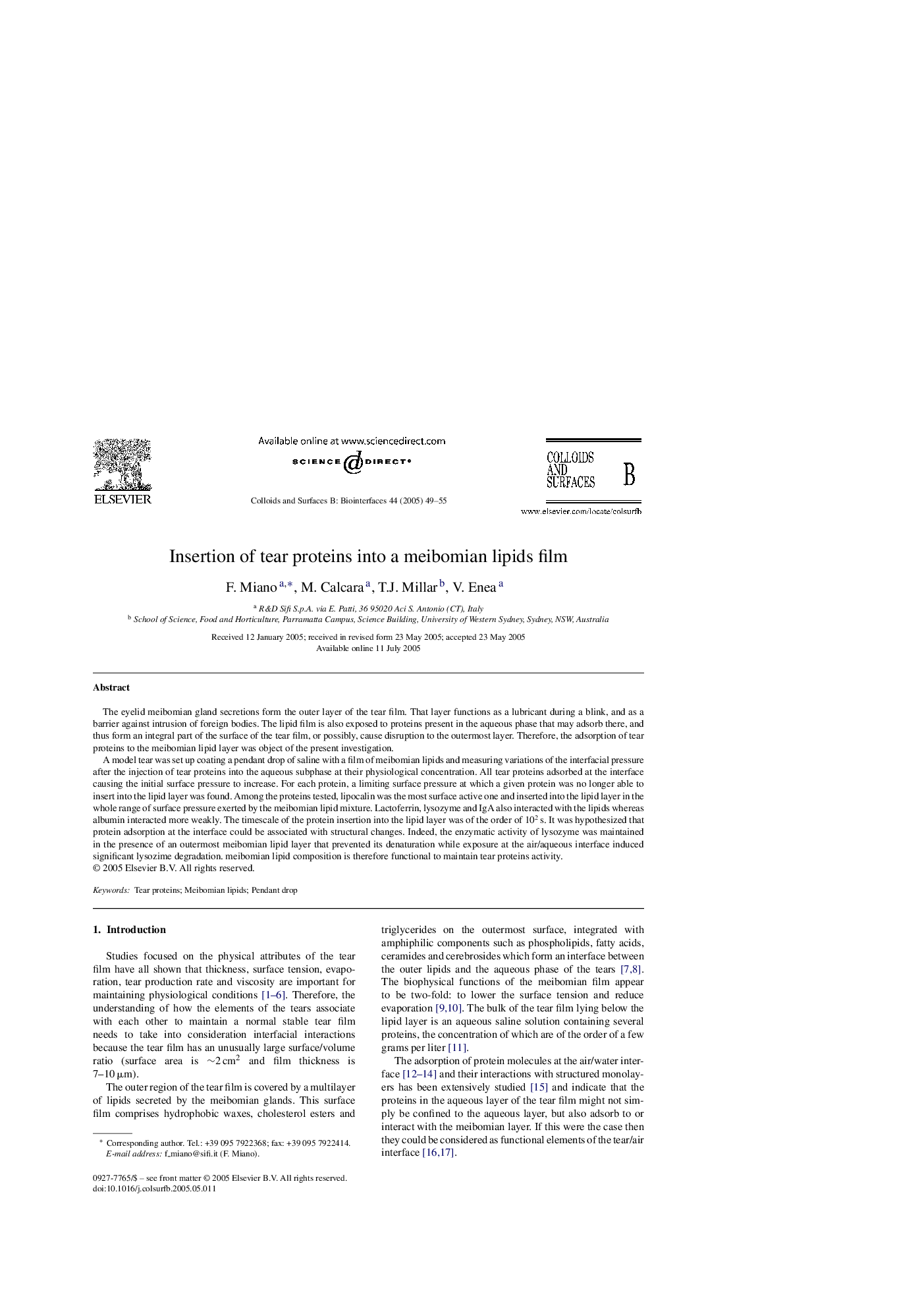| Article ID | Journal | Published Year | Pages | File Type |
|---|---|---|---|---|
| 10374971 | Colloids and Surfaces B: Biointerfaces | 2005 | 7 Pages |
Abstract
A model tear was set up coating a pendant drop of saline with a film of meibomian lipids and measuring variations of the interfacial pressure after the injection of tear proteins into the aqueous subphase at their physiological concentration. All tear proteins adsorbed at the interface causing the initial surface pressure to increase. For each protein, a limiting surface pressure at which a given protein was no longer able to insert into the lipid layer was found. Among the proteins tested, lipocalin was the most surface active one and inserted into the lipid layer in the whole range of surface pressure exerted by the meibomian lipid mixture. Lactoferrin, lysozyme and IgA also interacted with the lipids whereas albumin interacted more weakly. The timescale of the protein insertion into the lipid layer was of the order of 102Â s. It was hypothesized that protein adsorption at the interface could be associated with structural changes. Indeed, the enzymatic activity of lysozyme was maintained in the presence of an outermost meibomian lipid layer that prevented its denaturation while exposure at the air/aqueous interface induced significant lysozime degradation. meibomian lipid composition is therefore functional to maintain tear proteins activity.
Keywords
Related Topics
Physical Sciences and Engineering
Chemical Engineering
Colloid and Surface Chemistry
Authors
F. Miano, M. Calcara, T.J. Millar, V. Enea,
